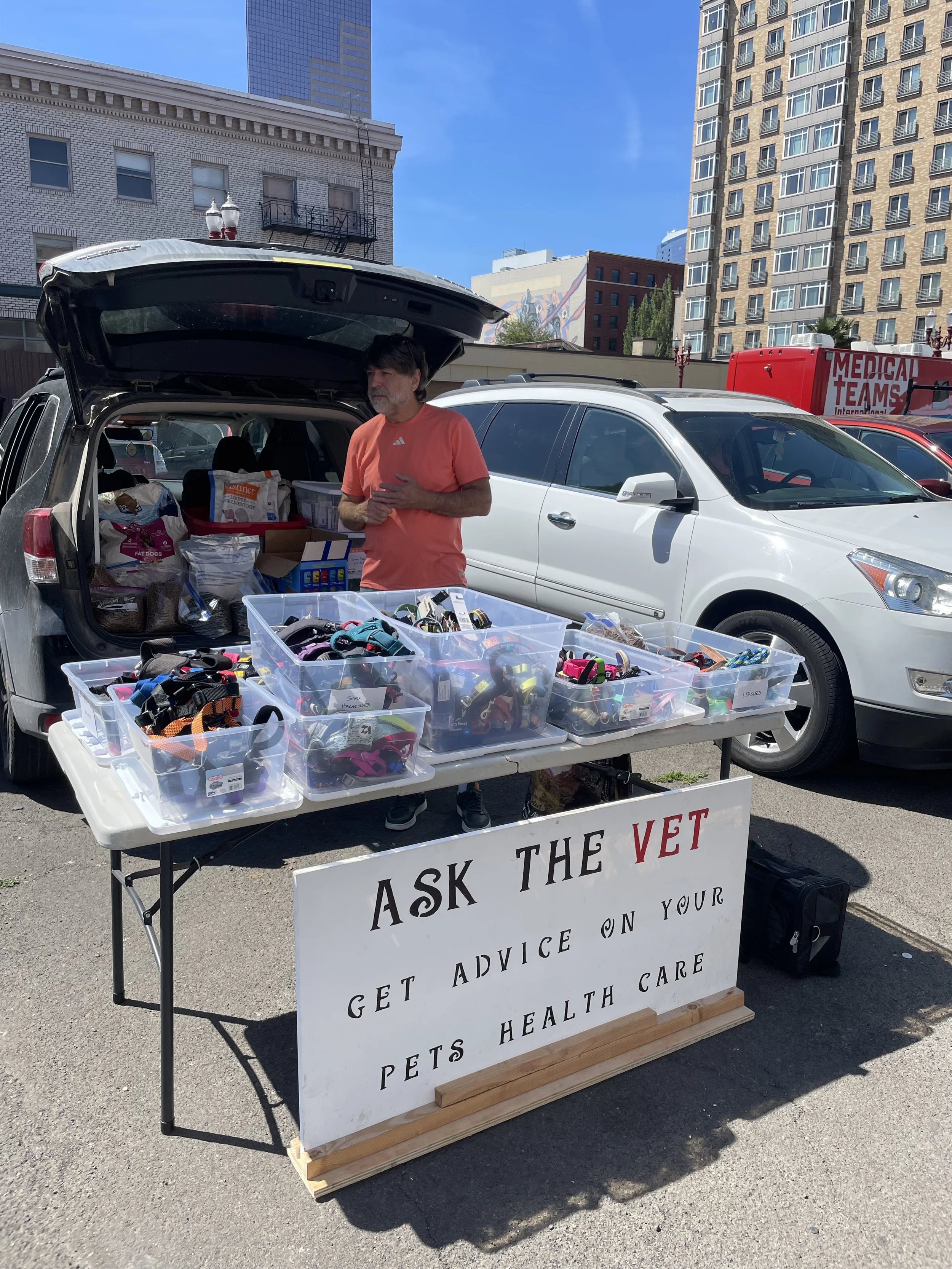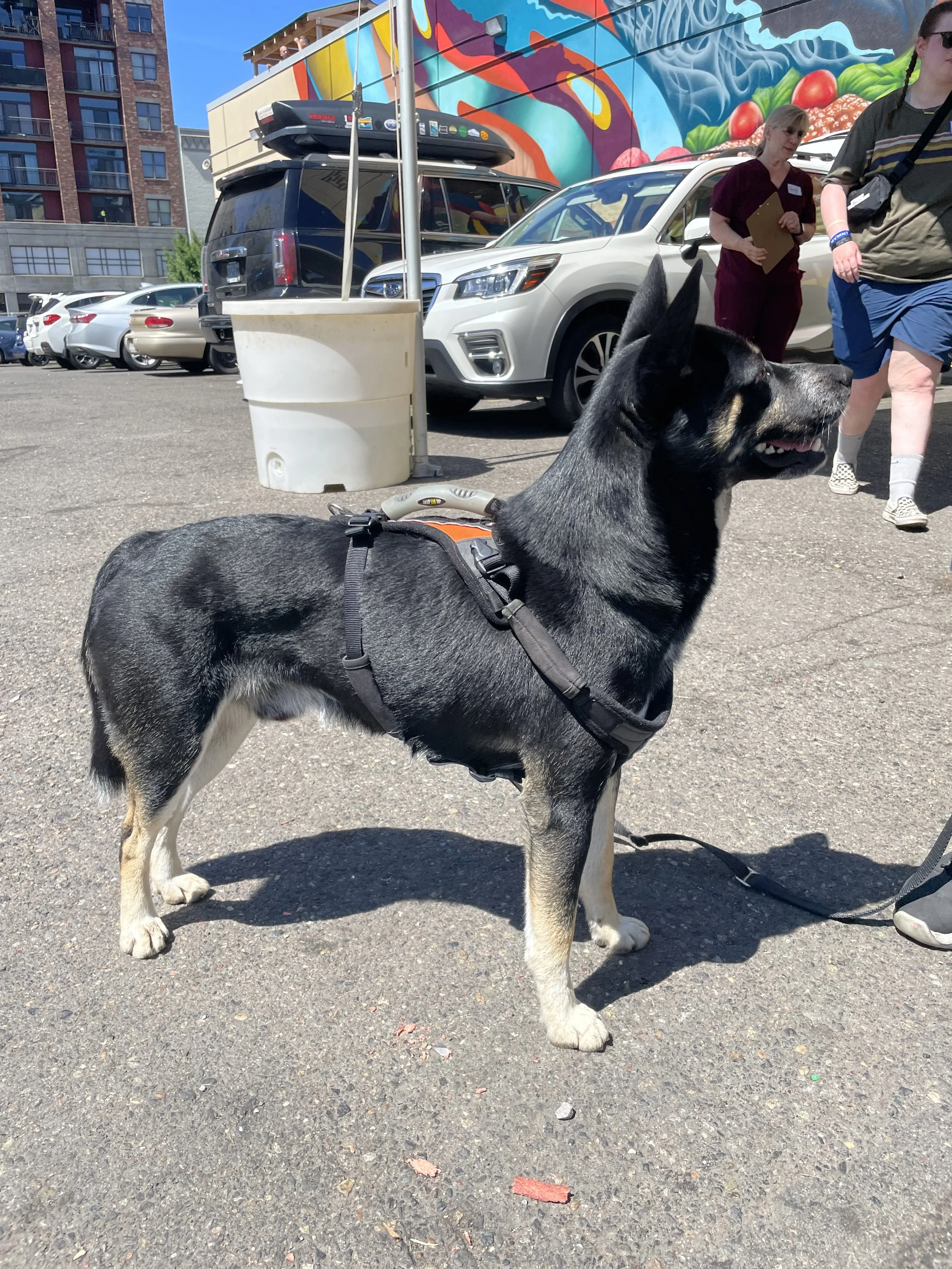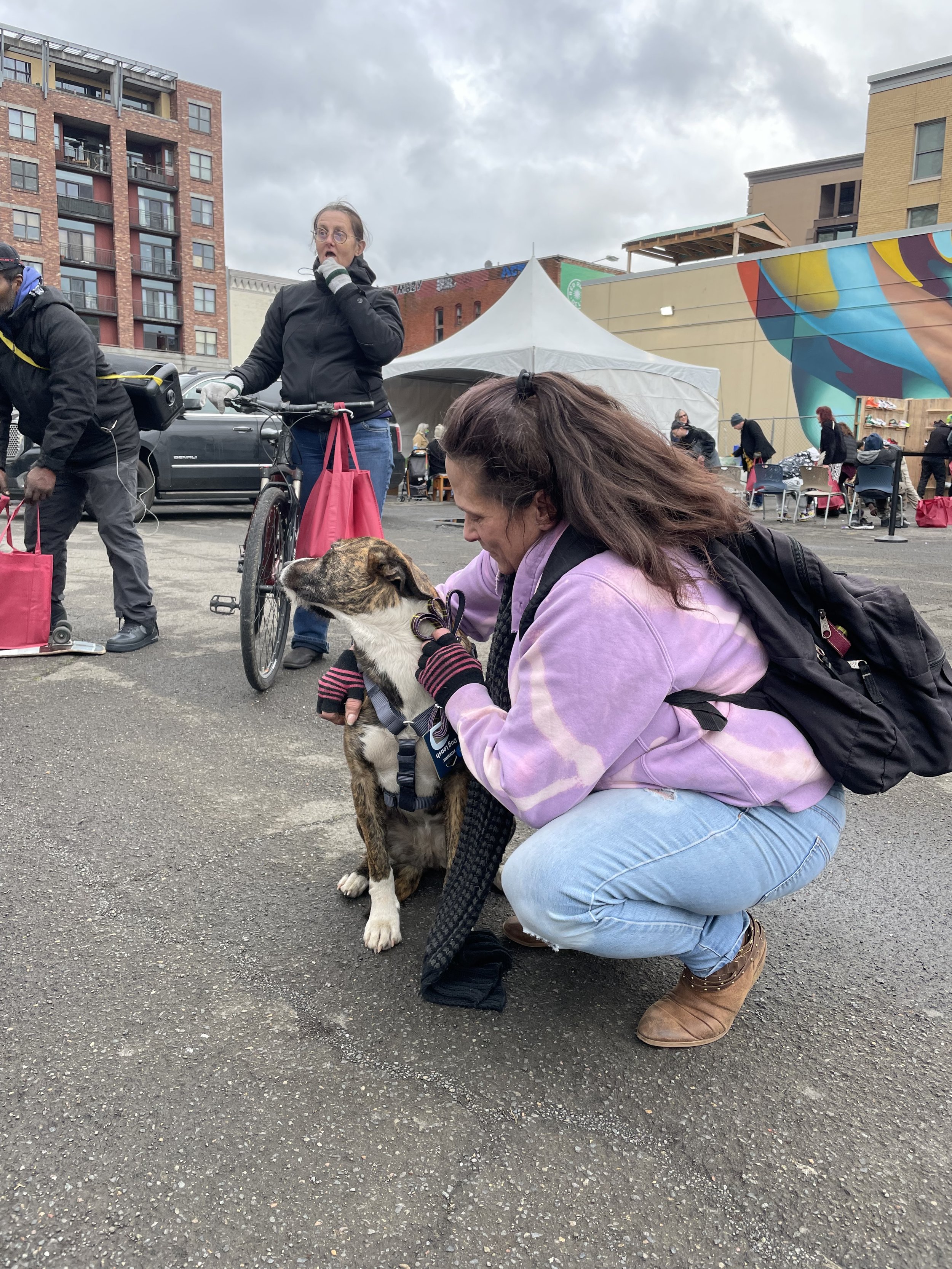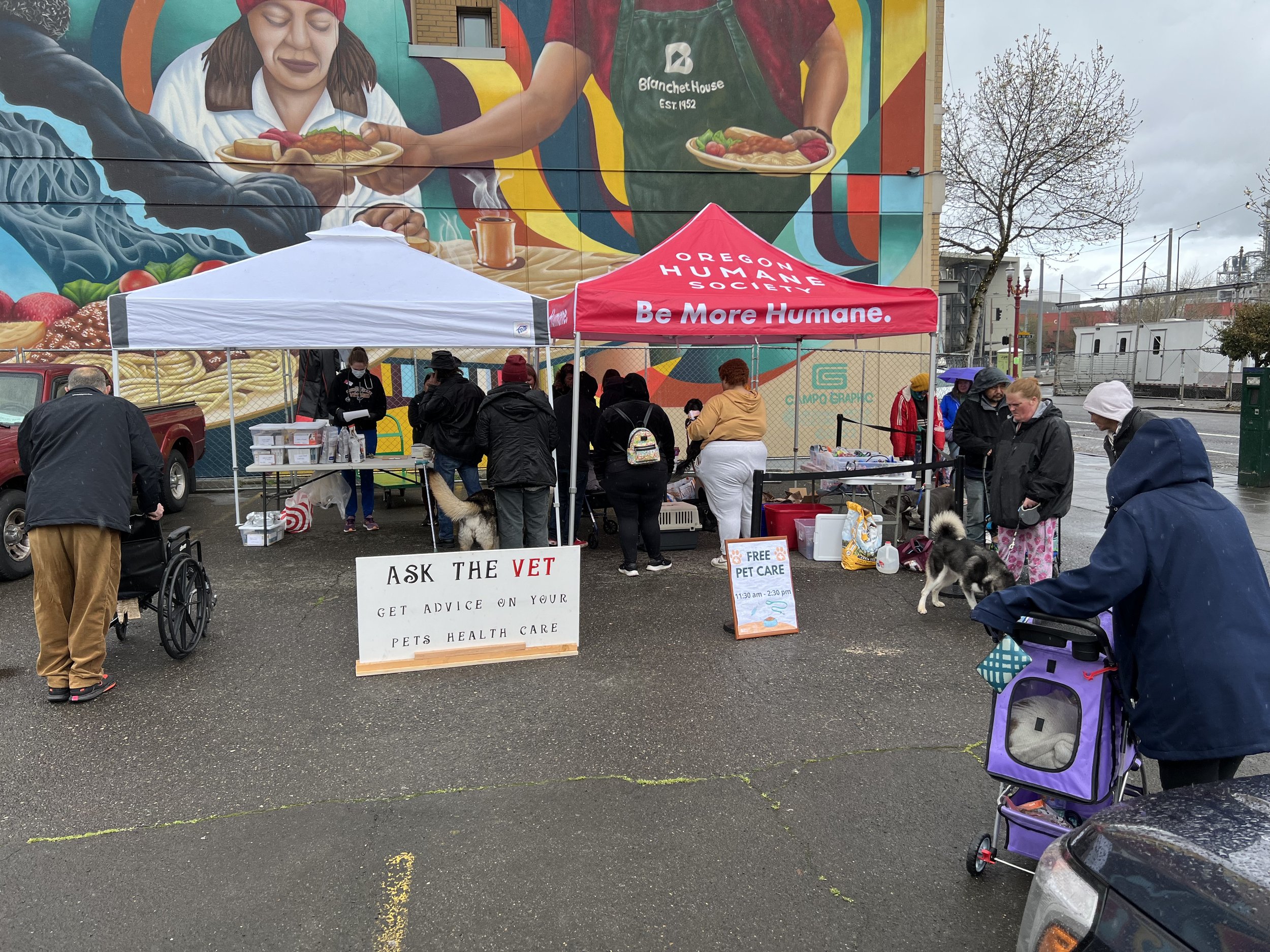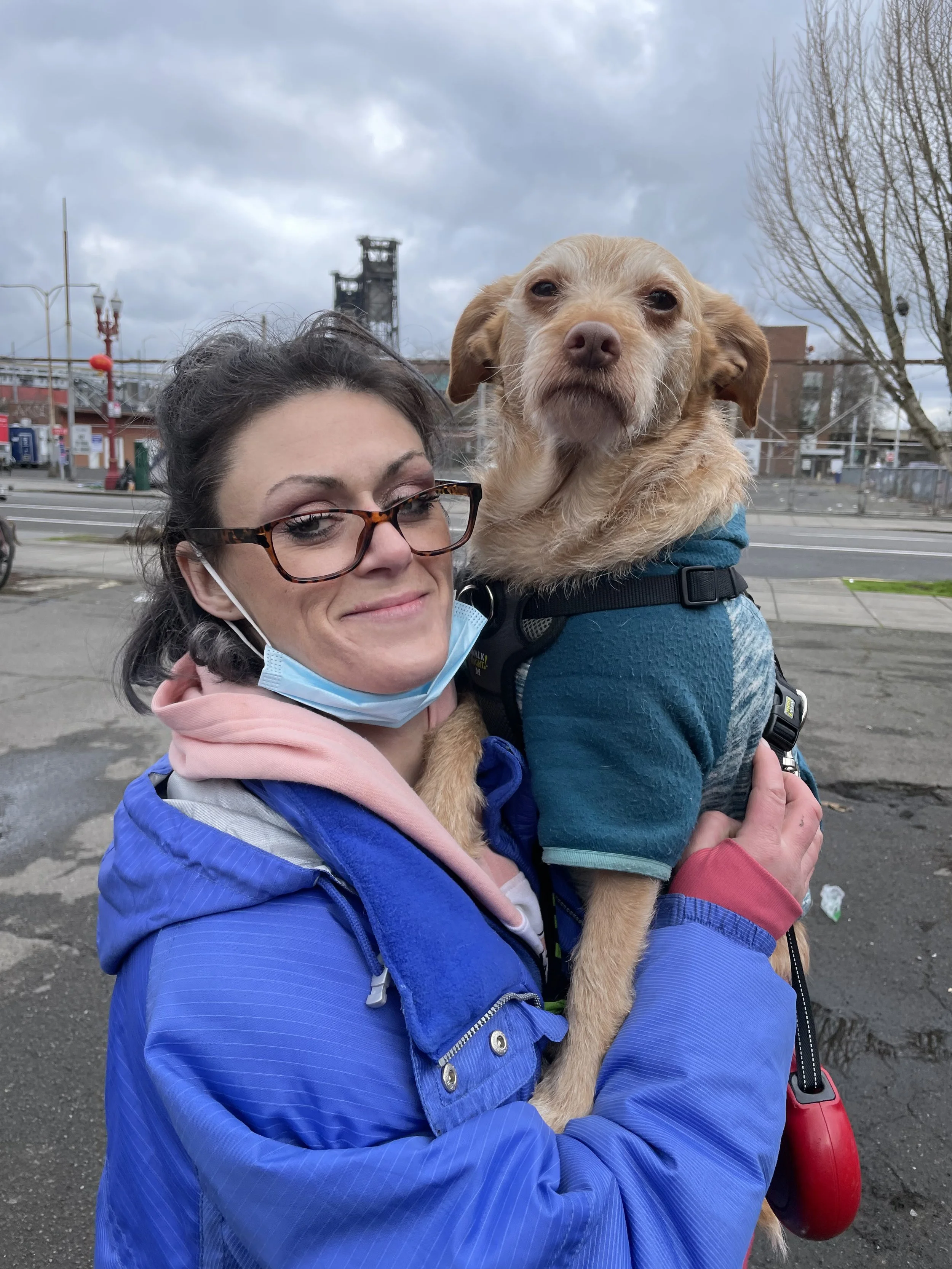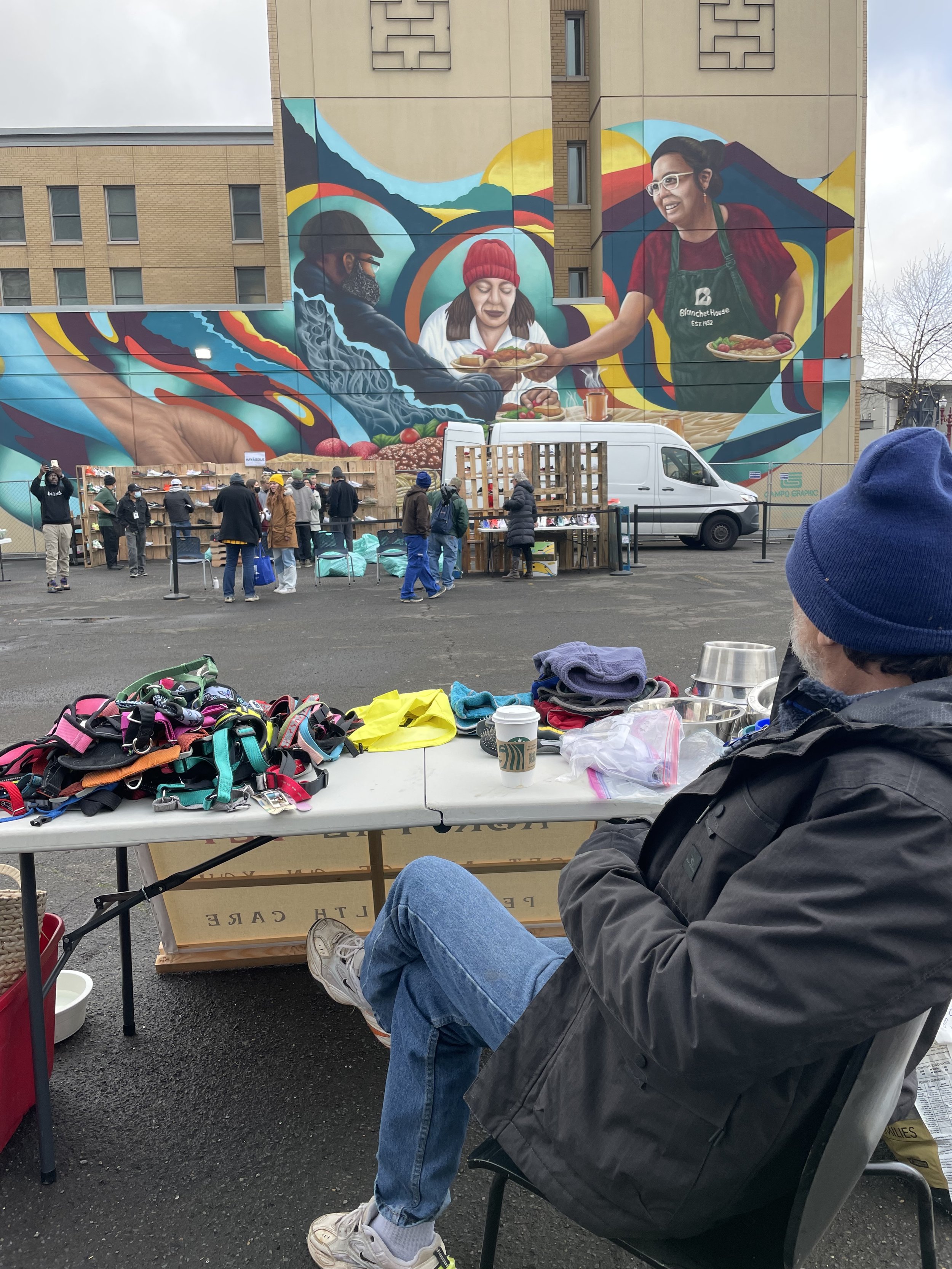Street Pets: Meeting people and pets where they are
Why would someone experiencing homelessness chose to care for an animal?
I walk the streets of downtown Portland where I live. Tents are set up along the sidewalks for as far as I can see. A group of people sitting on nearby benches joke with one another about something that happened the night before, or express concern about reports of an upcoming “sweep,” when city officials will dismantle their temporary shelters, and confiscate their belongings. A dog sleeps under an awning next to his owner.
The HUD reports that more than half a million people in the United States experienced homelessness on any given night in 2020. These individuals may be sheltered in an emergency facility, living in their cars, or sleeping on the street. The lucky ones have a roof over their heads, access to food, laundry facilities and the occasional shower. Others survive with nothing but the clothes on their backs. And one in ten people experiencing homelessness has a pet.
Why would someone experiencing homelessness chose to care for an animal? Pets are expensive, and demand resources like food and veterinary care that can be difficult to access when living on the street. Perhaps most significantly, an animal can make it difficult to find housing, as many emergency shelters or affordable housing options have no-pet policies. Yet most homeless pet owners will refuse access to services or shelter if it means leaving their dog or cat behind. The human-animal bond is just that strong.
The mental and physical health benefits of pet ownership are well established. Pet owners experience less anxiety and depression, have lower blood pressure, reduced cholesterol levels and are at lower risk for heart attacks. By reducing stress, boosting mood, and helping instill a sense of responsibility, pets often play a positive role in addiction recovery programs or for managing PTSD.
Members of the homeless community face challenges beyond simply meeting basic needs for food and shelter. They experience social isolation, boredom, depression, and feelings of hopelessness. They are at higher risk for becoming victims of sexual assault or violent attacks. Over 10 percent of people experiencing homelessness are veterans who struggle with PTSD. And many have fallen victim to substance abuse.
With an animal companion by their side, the challenges faced by people experiencing homelessness can feel less overwhelming. The loneliness and isolation they feel is eased by the companionship and unconditional love offered by a dog or cat. Depressive symptoms are fewer among homeless youth who have pets than those who do not, and women seeking escape from domestic violence may feel protected by a dog. For some, the responsibility of caring for a pet may be the primary motivation to find a path forward: to get up in the morning, find a job, or seek recovery from addition.
As I walk the streets, I look around me and am overwhelmed. I wonder what role I can play to help right the wrongs in our unjust society. What can I do to make a difference? I know that I can’t “save the world,” but as a veterinarian, I realize that I can help take care of the pets that play a positive role in the lives of people experiencing homelessness. I can advocate for pet-friendly shelters, provide for basic needs like food and water, and arrange for access to routine veterinary care. While it may seem overwhelming, I realize that I can make a difference for each person and pet I touch. I try to remember that “a journey of a thousand miles begins with a single step” (Chinese proverb—Laozi)

